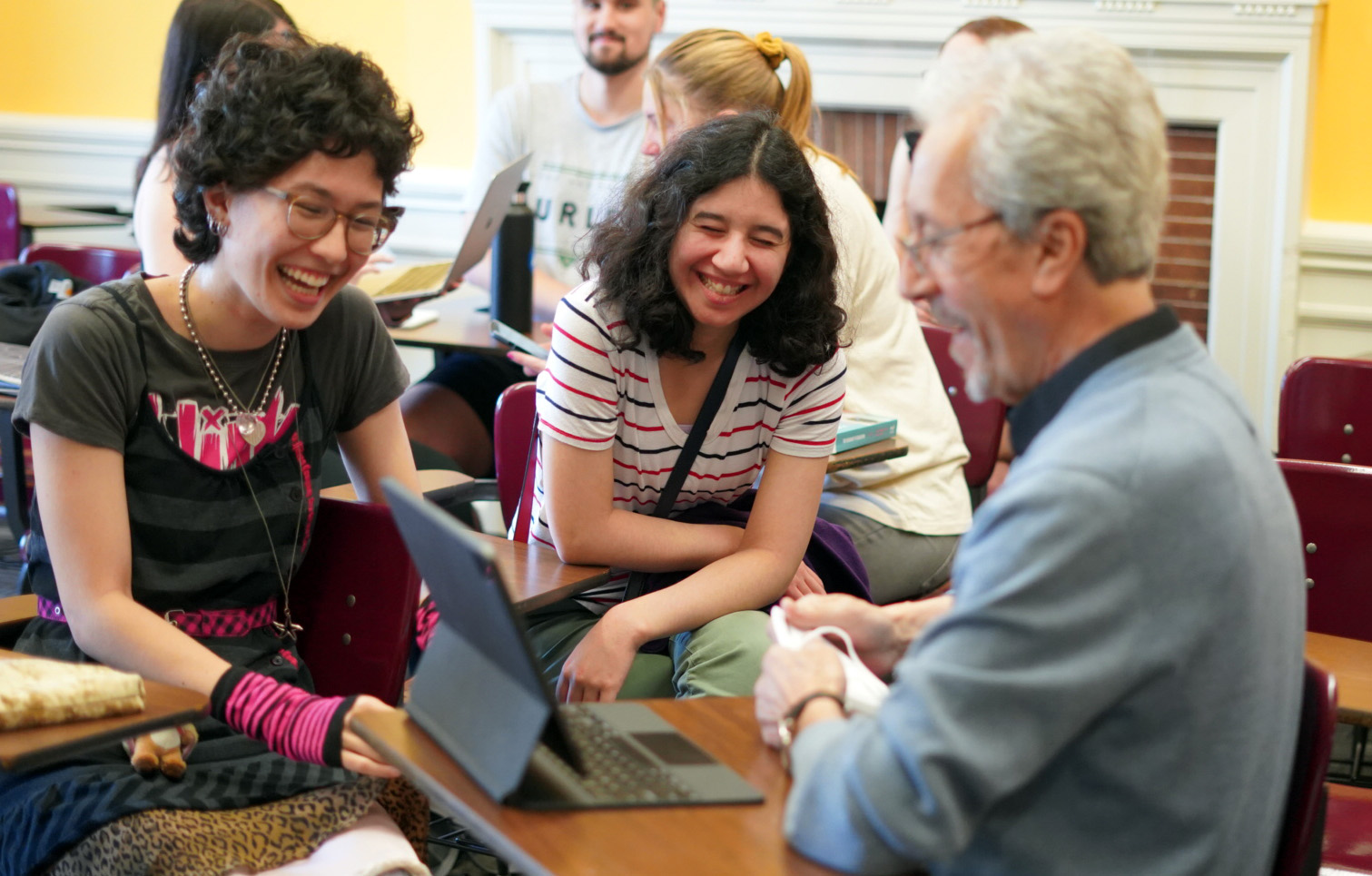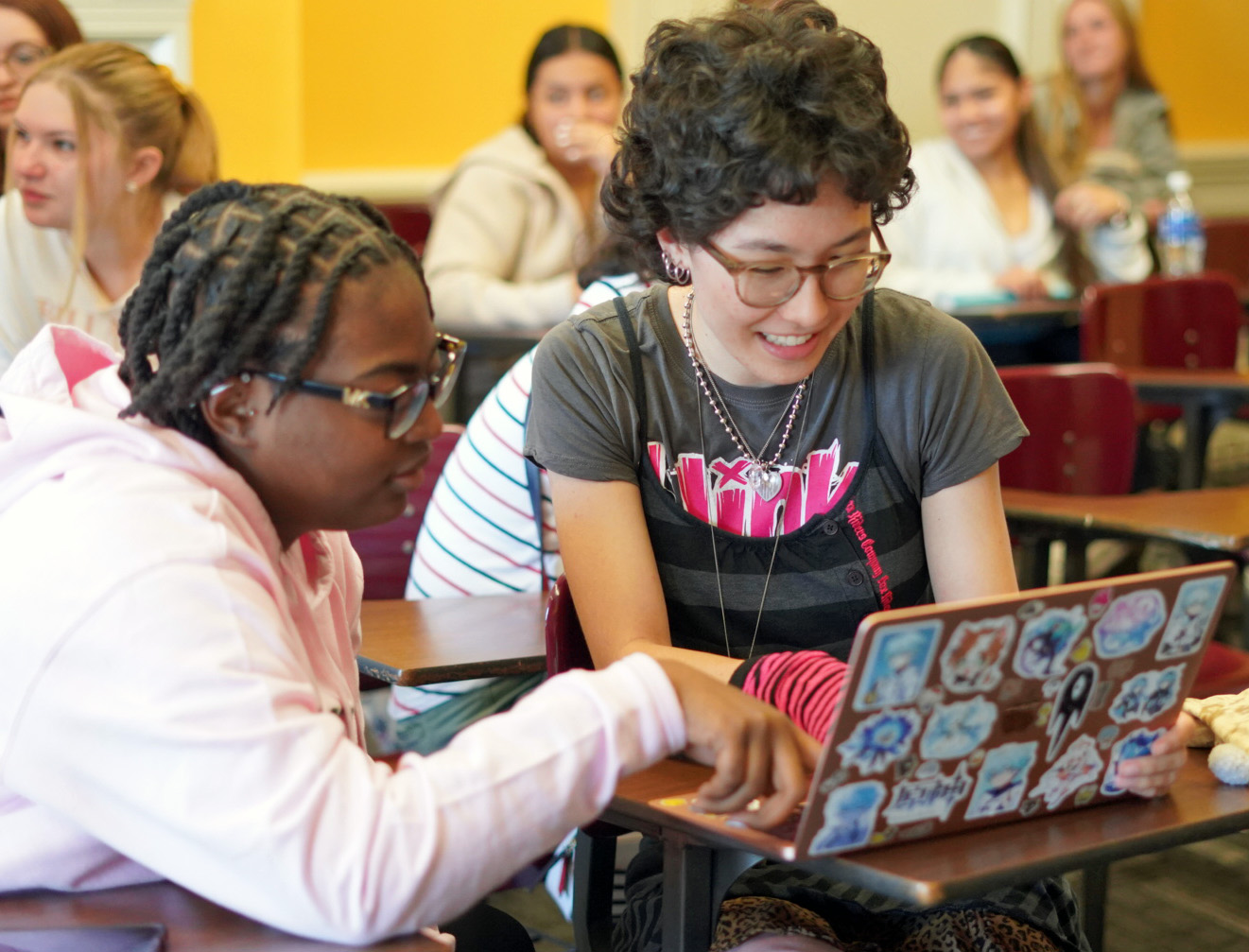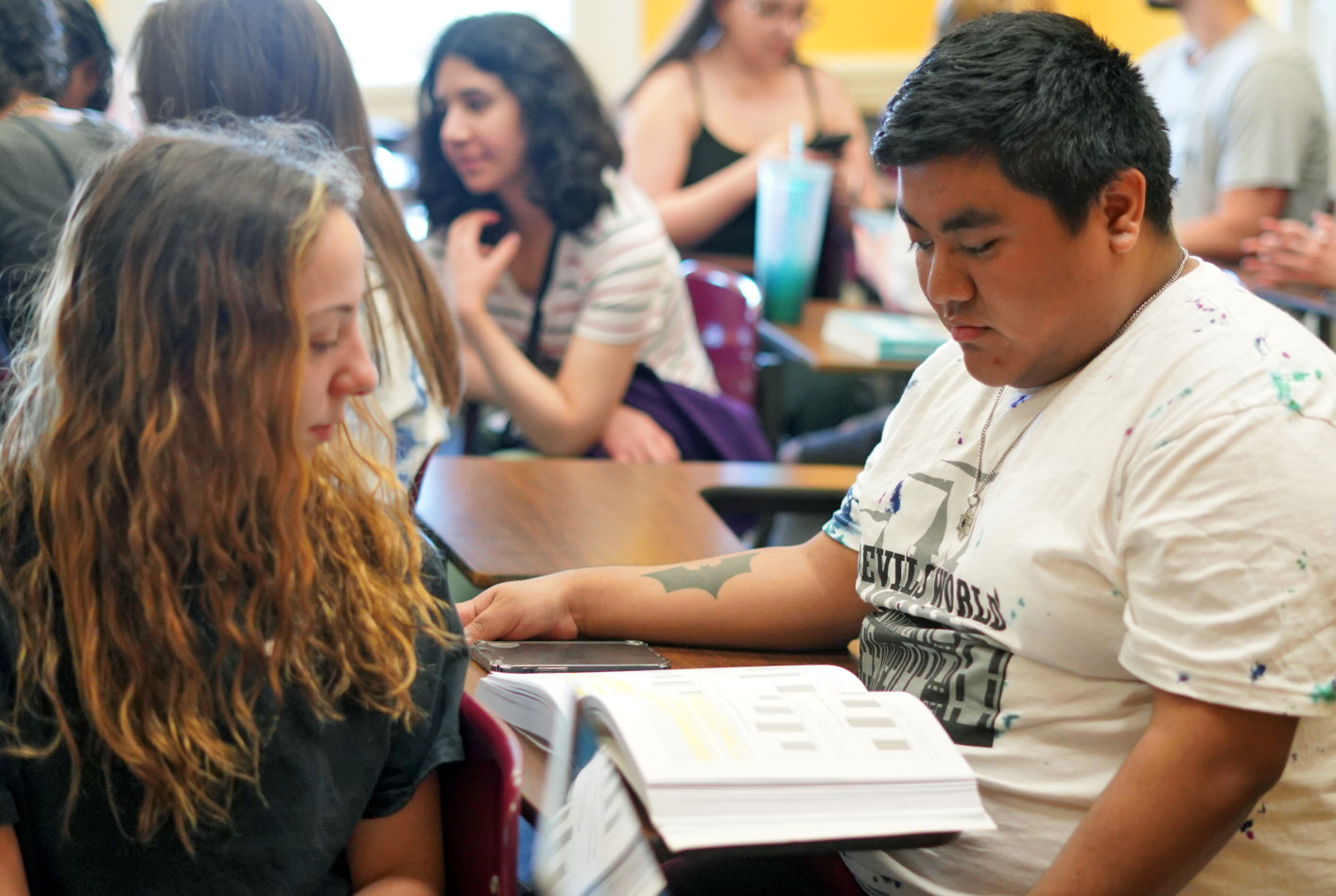Through textbooks and literature, students examine gender and race representation in public education

Sophomore Michele Schnitz, junior Amanda Clark and professor Riad Nasser. (Photo: Evan Covington)
By Kenna Caprio
Florham Campus students taking Schools and Society with Riad Nasser, professor of sociology, recently conducted research on gender and race representation in public school textbooks and English literature curriculum.
They found sporadic female representation in the selected literature, with women characters most often described in relation to male characters — as mothers, wives, sisters or partners — and relegated to supporting roles.
“It’s hard to judge a book based on the absence of something — in this case, women — but the ratio between male and female characters often skews in favor of men, especially in terms of main characters,” says Amanda Clark, a junior creative writing and QUEST major. “I also focused on the gender of the authors. A major criticism of the books we’re taught in public school is that we only read works by straight, white men. What I found most interesting, is how women authors had the same sexist problems in their books as the male authors did. That implies that gender roles can become so ingrained that women end up perpetuating the same gender stereotypes.”

Junior Shaniah Davis and sophomore Michele Schnitz. (Photo: Evan Covington)
In textbooks, both female and Black historical figures were underrepresented. “There were more female textbook authors than male, and still there was little to no information about women in history. Nor were other cultures or people of color highlighted, beyond a mere mention,” says Shaniah Davis, a junior theater arts major. The history textbooks made only brief reference to some of the most famous Black Americans, including Martin Luther King, Jr., Rosa Parks and W. E. B. Du Bois.
“We found that gender bias still permeates modern-day high school textbooks and might have an impact on student self-esteem and gender identity,” says Michelle Schmitz, a sophomore sociology major.
“The gender biases that permeate textbooks must be at the forefront of discussions around educational reform in order for gender equity to take place within the educational system and within society as a whole,” says Nicolette Visciano, a senior creative writing major. “It is important to understand that children are always consciously and unconsciously forming impressions of their own potential and ability based upon societal and cultural influences. As long as educational tools reflect a biased representation of gender roles, progress toward gender equity and equal representation will remain stunted.”

Students Ashley Suarez and Eli Berg.
Brittany Clifford, a junior creative writing and QUEST major, and Evan Covington, a junior film and animation major, also contributed to the research.
“With the right guidance and training, students can acquire the academic skills to conduct full-scale research on social issues. The skills that these students have gained from this exercise will increase their competitiveness both, in the future labor market, and in graduate school studies,” says Nasser.